LisbonLisboaPortugal.com
The best independent guide to Lisbon
LisbonLisboaPortugal.com
The best independent guide to Lisbon
Lisbon in November; Is it a good month to visit?
November is a challenging month to love Lisbon.
The city drops all pretence of being a year-round summer destination as grey Atlantic systems roll in with increasing frequency, bringing days of persistent drizzle that empty the viewpoints of all but the most determined visitors. The clocks have fallen back, plunging evenings into early darkness by 6pm, while a proper winter chill settles into the narrow streets of Alfama and Bairro Alto. This is when the gap between travel brochure Lisbon and actual Lisbon becomes a chasm.
Yet November offers something valuable: a glimpse of Lisbon as it was before mass tourism, a time when trams have empty seats, neighbourhood cafés belong to regulars, and restaurants value their customers. For this quiet month, major attractions become yours alone: the Jerónimos Monastery without queues, the castle ramparts without the jostling and Belém Tower without a single tour group in sight.
Hotels that command premium rates in summer suddenly become startlingly affordable, and restaurant tables need no advance booking. A trip in November trades weather for something increasingly rare: an authentic, untouristed Lisbon.
Success in November requires embracing indoor Lisbon as enthusiastically as its outdoor attractions. This is the month to discover why locals spend hours in their traditional neighbourhood restaurants, to understand the ritual of the afternoon pastel de nata, and to explore museums you'd skip in better weather. When sunshine does break through, it feels like a gift, sending everyone onto terraces and viewpoints with the grateful enthusiasm of those who know not to take good weather for granted.
This guide will show you how to experience Lisbon like a local in November, balancing indoor pursuits with strategic outdoor adventures when the weather cooperates.
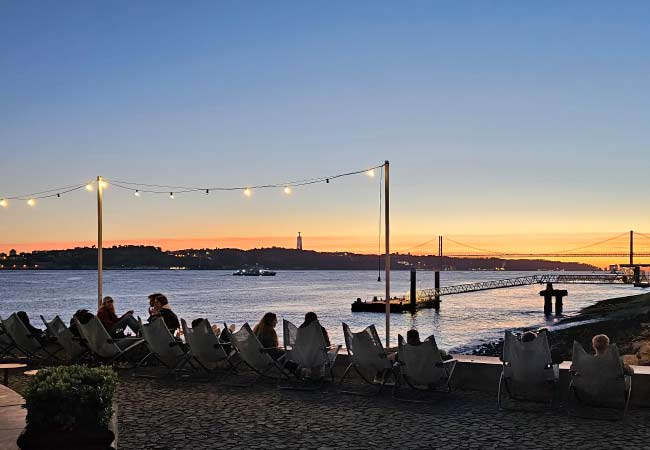
Sunset comes early in November, around 6pm, but clear days can deliver spectacular views over the Tejo estuary
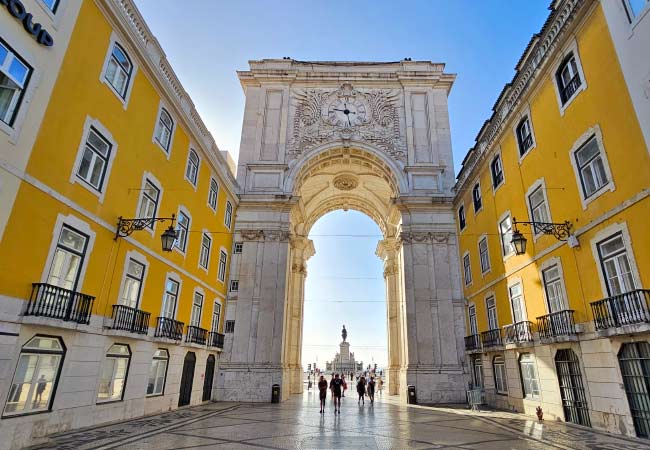
The Arco da Rua Augusta - Lisbon will have significantly fewer tourists in November
Lisbon Weather in November
November marks Lisbon’s transition into winter, bringing with it cooler temperatures, shorter days, and a significant increase in rainfall.
On average, daytime temperatures cool to 18C (64F), with a nighttime minimum of 11C (52F). November is one of Lisbon’s wettest months, with rain falling on approximately half the days and accumulating a substantial 128mm of precipitation. Sunshine is limited to an average of five hours per day.
These statistics, however, don't fully capture the day-to-day experience. November's weather often arrives in distinct spells: a period of grey, wet days can be followed by several days of mild weather and weak winter sun. A visit during this month can coincide with either of these patterns.
The most significant factor for visitors is the limited daylight. The sun sets early, falling to around 5:30 pm by late-November, which curtails time for outdoor exploration. This, combined with frequent cloud cover, can make November feel particularly gloomy for those accustomed to Portugal’s famously bright summers.
Insight: Despite the increased rain, Lisbon’s November weather is often significantly milder and sunnier than in almost any other major European city, making it a popular choice for a late autumn city break.
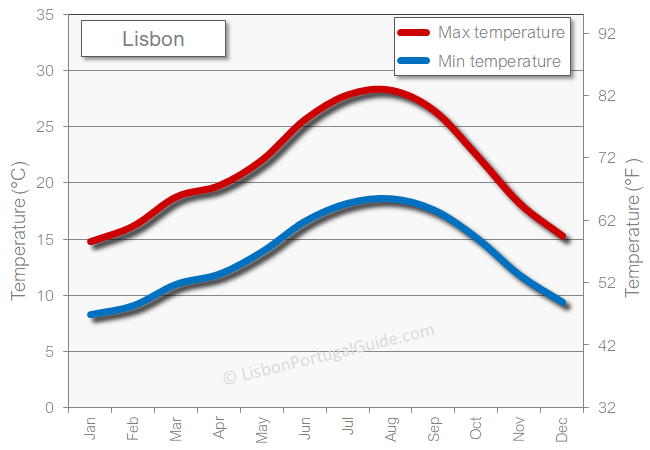
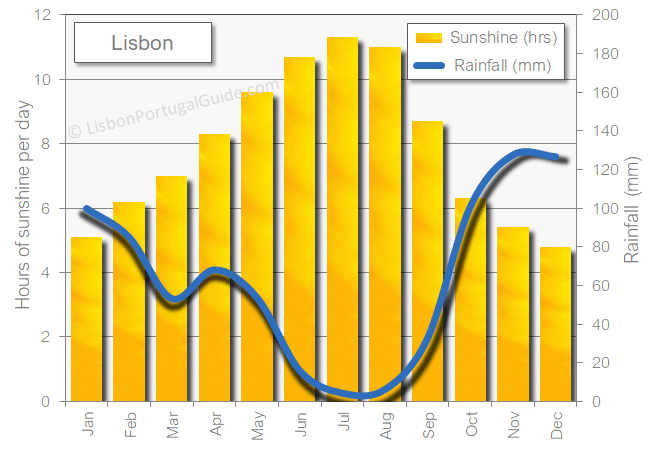
Highlights of Lisbon in November
November adopts a quieter, more local feel, making it the perfect time to explore its grand monuments and museums without the crowds:
• Jerónimos Monastery: This UNESCO World Heritage site is the masterpiece of Manueline architecture, a symbol of Portugal's Age of Discovery. Its breathtaking two-story cloister is famed for its delicate, lace-like arches decorated with intricate maritime carvings. - Jerónimos Monastery
• Alfama & São Jorge Castle: Wander the maze-like streets of Alfama, Lisbon’s oldest neighbourhood, making your way up to the commanding São Jorge Castle. The clearer autumn air often provides fantastic visibility from the castle walls, offering sweeping views across the city’s rooftops to the Tagus River - Alfama guide.
• LX Factory: This repurposed 19th-century factory complex is a hub of creativity that thrives in any weather. Explore the independent boutiques, artist studios, and innovative restaurants, all connected by covered walkways perfect for an autumn day.
• Oceanário de Lisboa: An ideal escape on a wet November day, this world-class aquarium is renowned for its innovative design. The main attraction is an enormous five-million-litre central tank, home to sharks, rays, and massive sunfish.
• Sintra Day Trip: If the forecast promises a clear day, take a trip to the enchanting town of Sintra. Cooler autumn temperatures are ideal for exploring the romantic Pena Palace and mystical gardens of Quinta da Regaleira without the intense heat and crowds of summer
• Baixa District: Explore Lisbon’s elegant neoclassical downtown, where the quieter streets of November allow you to truly appreciate the grand scale of its famous squares, from Rossio to the monumental Praça do Comércio on the riverfront - Baixa guide.
• Tram 28: Experience the famous Tram 28 route as the locals do. In November, you can often find a seat on this historic tram, enjoying an unobstructed view as it rattles through the narrow streets of Alfama and Graça on its daily journey. - Tram 28 guide
• National Tile Museum: Perfect for a rainy afternoon, this unique museum traces the five-century history of the Portuguese azulejo tile, culminating in a magnificent panorama of pre-earthquake Lisbon.
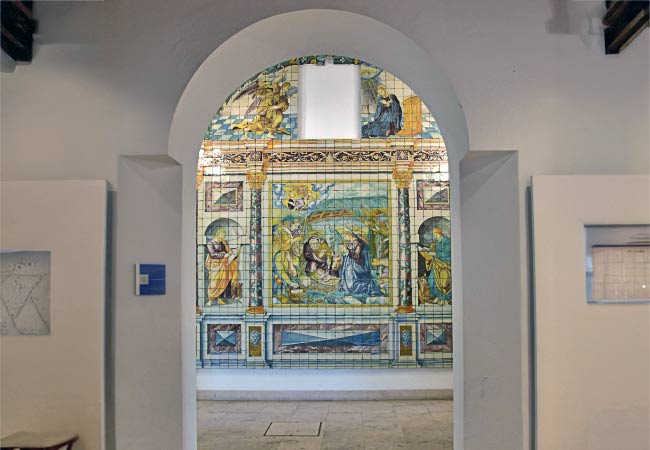
Have you booked your hotel yet?
November offers Lisbon's best accommodation bargains of the year, with hotels desperate to fill rooms during the annual tourism low. This creates exceptional opportunities for budget-conscious visitors.
The map below displays available accommodation across Lisbon's neighbourhoods. Adjust the dates to match your November travel plans to see current rates and availability:
Booking.comNovember's Events and Holidays
All Saints' Day – 1st November
The primary public holiday in Portugal during November is All Saints' Day (Dia de Todos-os-Santos) on November 1st. This is a national holiday, and as such, banks, schools, and many businesses will be closed. It is a day of solemn remembrance, where families traditionally visit cemeteries to honour their deceased loved ones, laying flowers and cleaning graves.
The Feast of St. Martin – 11th November
Perhaps the most charming event of the month is St. Martin's Day (Festa de São Martinho), which is a celebration of the harvest. While not a public holiday, it's impossible to miss. The air fills with the scent of street vendors selling freshly roasted chestnuts (castanhas assadas). The tradition is to eat the warm chestnuts while tasting the year's new wine.
Sintra in November
Sintra is Lisbon's most popular day trip, and most visitors arrive dreaming of Pena Palace's fairytale towers and Quinta da Regaleira's mystical gardens. As autumn gives way to winter, a visit in November requires a pragmatic approach.
Its location within the Serra de Sintra mountains gives rise to a distinct microclimate, one that is noticeably cooler and wetter than Lisbon. Persistent fog often settles on the hills, shrouding the palaces even when the capital is enjoying clear autumn skies.
Visiting on a wet November day means missing out on the very essence of Sintra. The celebrated panoramic views vanish into the clouds, Pena Palace's vibrant colours turn dull, and the ancient stone ramparts can become slick and hazardous. An ill-timed visit almost always results in a day spent cold and damp, not enchanted.
A successful trip this month hinges on one factor: the weather. It is essential to check the specific forecast for the Sintra hills before leaving Lisbon. A clear day offers the magnificent reward of tourist-free palaces, while a trip in poor weather is a near-certain recipe for disappointment.
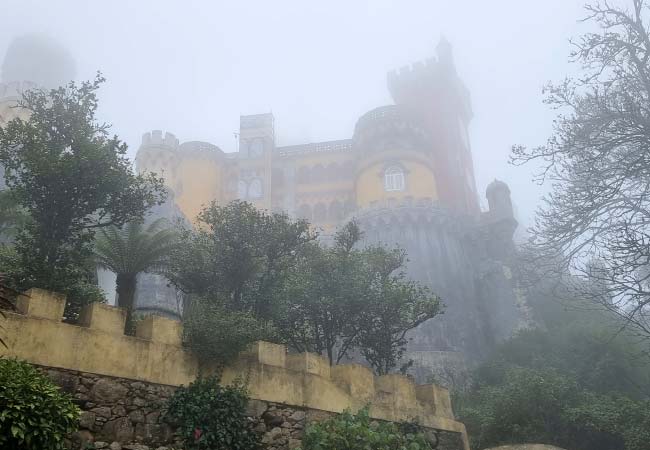
Sintra is often shrouded in thick fog, which can last for the entire morning
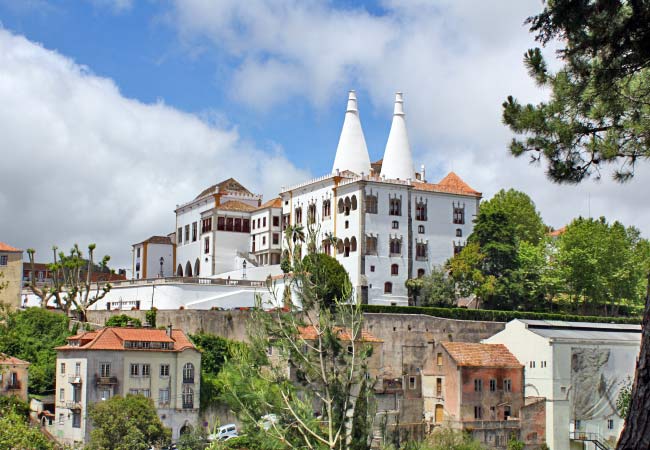
However, on a clear, sunny day, Sintra is a fantastic place to visit
What to do in Lisbon when it rains in November
November is frequently Lisbon’s rainiest month, making a solid indoor strategy essential for any visit. Luckily, the city is packed with world-class museums and engaging activities that make a wet day feel like a bonus, not a setback.
The Museu Calouste Gulbenkian holds a world-class private collection spanning from ancient Egyptian artifacts to Impressionist art. For a uniquely Portuguese experience, the Museu Nacional do Azulejo reveals the country's beautiful tile-making history in a former convent. The Museu Nacional dos Coches (Coach Museum) presents a spectacular collection of ornate royal carriages, while the magnificent Oceanário de Lisboa offers hours of fascination for all ages.
Shopping provides another excellent escape from the weather. For hundreds of stores under one roof, head to the large Colombo Shopping Centre. For a more traditional experience, explore the elegant boutiques and historic bookshops of the Chiado district. Finally, a wet day is the best time to find a seat on the famous Tram 28, watching the city’s oldest neighbourhoods slide by from the dry comfort of your window.

São Roque Church
A 5-Day Guide to Lisbon in November
Visiting Lisbon in November offers a unique opportunity to experience the city with fewer crowds and a more local atmosphere. The weather is cooler and can be unpredictable, so this itinerary balances Lisbon's famous landmarks with excellent indoor attractions, ensuring a memorable trip regardless of the forecast.
Day 1: The Historic Heart of Baixa and Alfama
The first day’s exploration centres on Lisbon’s two most significant districts: the grand, orderly Baixa and the ancient, labyrinthine Alfama. A visit here is a journey through the city’s history, from its imperial grandeur to its medieval soul.
The Baixa district is Lisbon's elegant downtown, a masterpiece of 18th-century urban planning defined by its grid-like streets and neoclassical architecture. Its most impressive landmark is the Praça do Comércio, a monumental waterfront square lined with grand arcades and opening directly onto the Tagus River.
This space, once the commercial heart of the Portuguese empire, remains the city’s most magnificent public area. Another architectural highlight is the Elevador de Santa Justa, an ornate, wrought-iron lift from 1902. This industrial-age marvel provides access to a viewing platform with superb panoramic views over Baixa’s rooftops and the nearby ruins of the Carmo Convent.
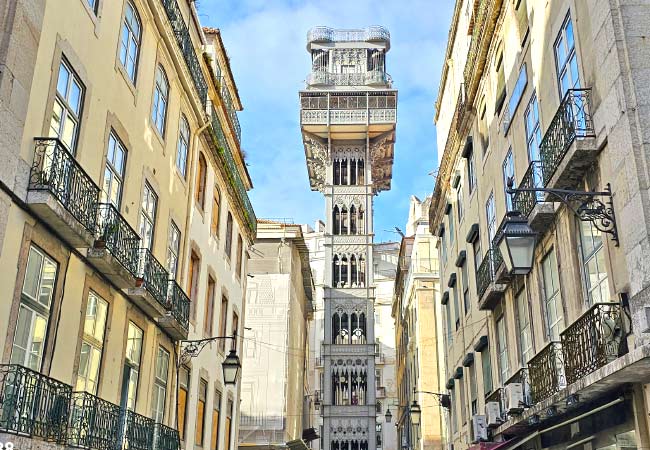
In stunning contrast to Baixa’s order is Alfama, the city’s oldest and most charismatic neighbourhood. Having survived the 1755 earthquake, it retains its medieval layout of steep, narrow alleys, hidden courtyards, and winding stairways. Exploring Alfama is a sensory experience; the sounds of daily life echo through the alleys, and in November, you may find the warm, sweet scent of roasting chestnuts from a street vendor.
The district is crowned by the formidable São Jorge Castle, a Moorish citadel whose ancient ramparts offer some of the most commanding views in all of Lisbon. Alfama is also home to the city’s imposing cathedral, the Sé de Lisboa, a fortress-like Romanesque church that has stood for centuries.
A classic Lisbon experience is a ride on the vintage yellow Tram 28, which rattles and screeches its way through these historic quarters, offering a unique perspective on the old city. As evening falls, Alfama becomes the home of Fado, Portugal's soulful and melancholic folk music. A dinner in an intimate Fado house is an essential cultural experience, and a perfect, soul-warming activity for a cool November night.
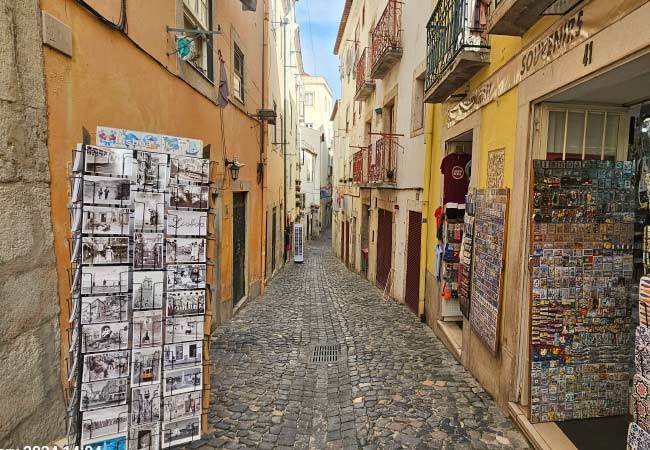
Day 2: Belém’s Monuments and Alcântara’s Creativity
This day focuses on two distinct waterfront districts. Belém is a grand, open area filled with monuments celebrating Portugal's Age of Discovery, while Alcântara showcases the city's modern, creative revival.
Belém is a district steeped in maritime history, and its most important landmark is the Jerónimos Monastery. This UNESCO World Heritage site is the ultimate expression of Manueline architecture, a uniquely Portuguese style where the limestone is intricately carved with maritime motifs like twisted ropes and nautical instruments. Its vast, ornate church and breathtaking two-story cloister provide a magnificent and sheltered space to explore, making it ideal for an autumn visit.
Nearby, the elegant Belém Tower stands as an iconic symbol of the city. This 16th-century fortress, with its delicate stonework, sits at the river’s edge, where it once guarded the entrance to the harbour.
A culinary pilgrimage in Belém leads to Pastéis de Belém, the historic bakery that has produced the original Portuguese custard tarts since 1837. The district also contains a superb collection of museums perfect for a rainy afternoon. The Berardo Collection offers a fantastic journey through modern and contemporary art, while the National Coach Museum houses an astonishing collection of opulent, gilded royal carriages.
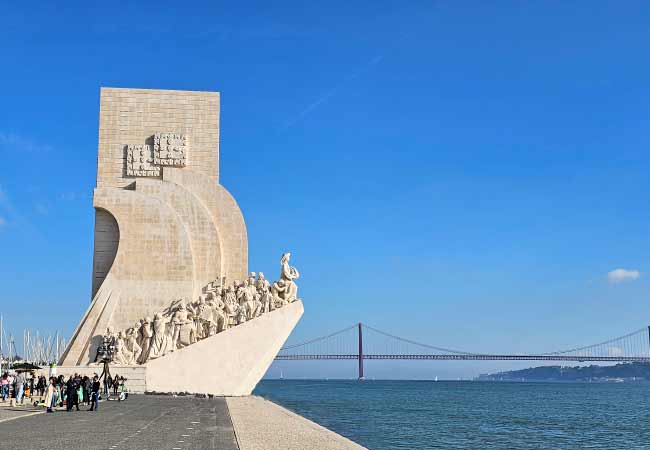
A short distance away lies the Alcântara district, home to the LX Factory. This repurposed 19th-century industrial complex is a symbol of Lisbon’s contemporary spirit. The sprawling site has been transformed into a dynamic hub of independent boutiques, artist studios, and innovative restaurants. Highlights include the remarkable Ler Devagar bookstore, built around an old printing press. The LX Factory’s industrial-chic atmosphere provides a fascinating contrast to the historic grandeur of Belém and is an excellent place to see Lisbon's modern, creative heart.
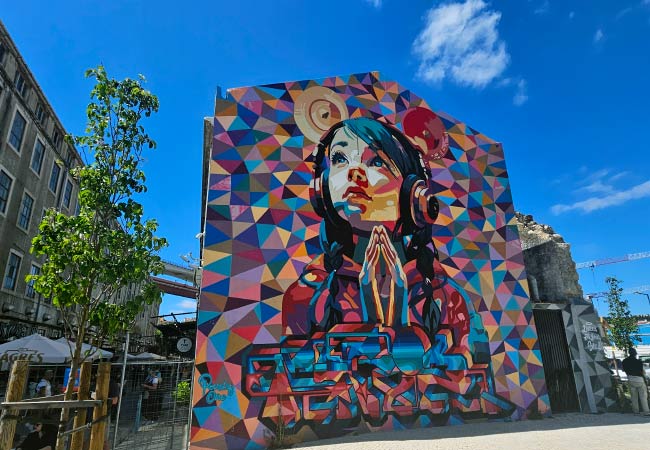
Day 3: A Fairytale Escape to Sintra (A Sunny Day Option)
This day trip is best saved for a clear forecast. If the sun is shining, an early train to Sintra is highly recommended. The cool temperatures of November are perfect for exploring the palaces and gardens of this UNESCO World Heritage town, which served as a summer sanctuary for Portuguese royalty.
Begin your visit at the spectacular Pena Palace. Perched high on a hill, its vivid red and yellow towers are an unforgettable sight. The soft autumn light enhances the palace's unique colours, and the morning mist that often blankets the surrounding forest can create a wonderfully dramatic atmosphere. Arriving early will help you avoid the largest crowds.
After exploring the palace, take a break for lunch in Sintra's historic village. For the afternoon, make your way to the Quinta da Regaleira, an estate filled with mystery and symbolism. The main attraction here is not the house but the enigmatic gardens, which feature hidden tunnels, grottoes, and the famous Initiation Well. An occasional November shower can even add to the mystical feeling of this unique landscape.
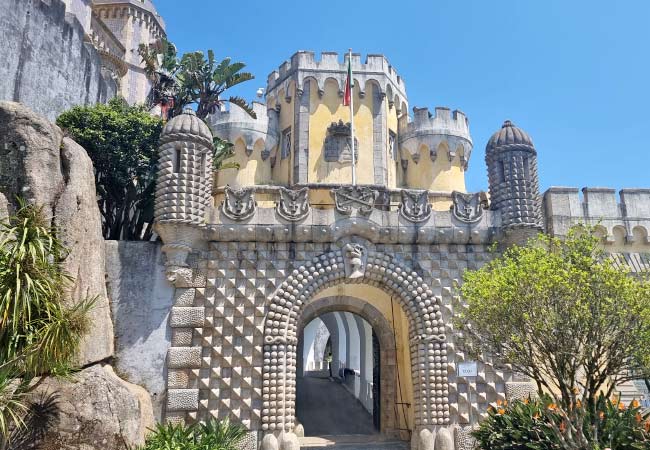
Day 4: Hilltop Neighbourhoods and a River Crossing
This day is perfect for exploring some of Lisbon's most characterful central neighbourhoods, offering plenty to see and do regardless of the weather. The journey begins in the leafy and sophisticated district of Príncipe Real. Its elegant squares are home to antique shops and concept stores, and on a Saturday, a popular organic farmers' market sets up beneath the trees. A highlight is the Embaixada, a 19th-century palace transformed into a unique shopping gallery with boutiques arranged around a beautiful covered courtyard.
From here, wander down through the narrow, cobbled streets of Bairro Alto towards Chiado, Lisbon's traditional and elegant shopping district. The low-angled November sun often creates perfect conditions for photography from the area's many viewpoints (miradouros). For lunch, a great all-weather option is the Cervejaria Trindade, a grand beer hall and restaurant located in a beautifully decorated former monastery.
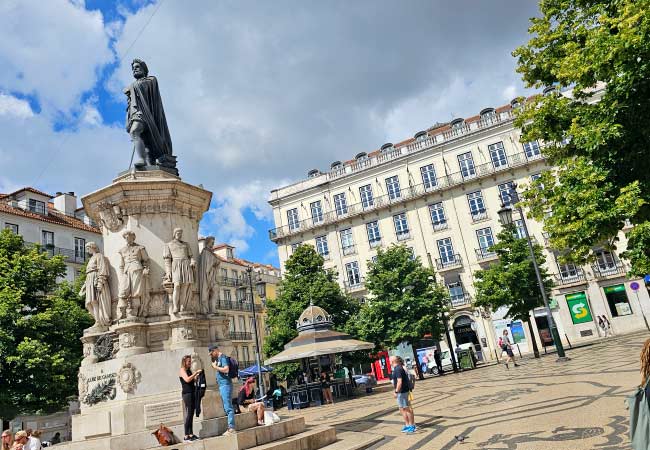
In the afternoon, head to the Cais do Sodré ferry terminal for a short trip across the Tagus River to the town of Cacilhas. This area is well-regarded by locals for its excellent and authentic seafood restaurants that line the waterfront, offering the freshest catch of the day.
From Cacilhas, a bus will take you up to the towering Cristo Rei (Christ the King) monument. The main reason for the journey is to experience the unparalleled panoramic view from its observation deck. From this high vantage point, the entire city of Lisbon is laid out across the water, providing a magnificent perspective on the sweep of the 25 de Abril Bridge and the city's historic skyline.
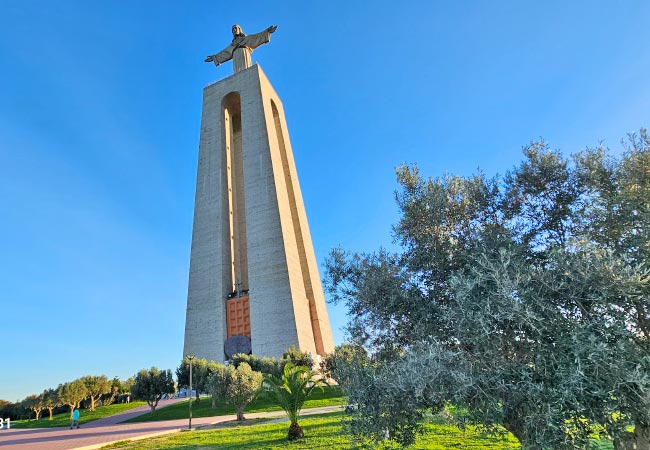
Day 5: Modern Marvels or Classic Collections (An All-Weather Plan)
The final day is designed to be flexible, offering two excellent and distinct options that are perfectly suited for the variable weather of November. You can choose between exploring Lisbon's contemporary waterfront or immersing yourself in the country's rich artistic heritage.
Option 1: A Glimpse into Modern Lisbon
The final day offers a journey into contemporary Lisbon with a visit to Parque das Nações. This district, built to host the 1998 World Expo, provides a striking contrast to the historic quarters explored on previous days. Its spacious design and modern attractions make it an excellent choice for a day with changeable weather.
The centrepiece of the area is the Oceanário de Lisboa, a world-class aquarium celebrated for its innovative design. The experience is built around a colossal central tank, which creates the absorbing illusion of the open ocean. Four additional exhibits correspond to the distinct marine ecosystems of the planet’s major oceans.
Beyond the aquarium, the district offers other modern conveniences. You will find a large, covered shopping centre for any last-minute needs. On days with clear weather, a ride on the Telecabine Lisboa (cable car) provides sweeping views of the waterfront, the Vasco da Gama Bridge, and the district’s bold architecture.
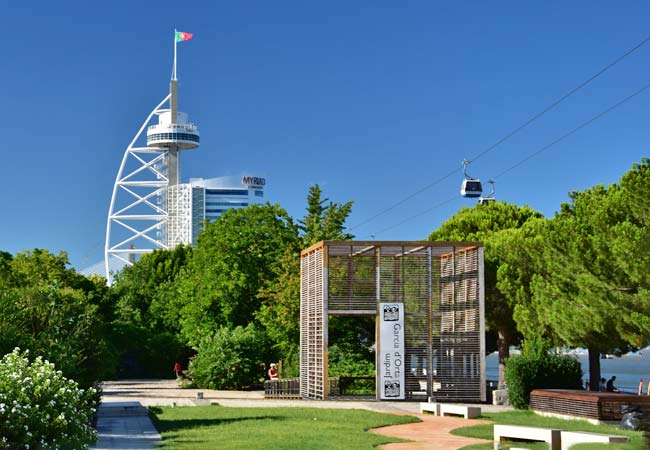
Option 2: A Day of Art and History
Alternatively, dedicate the day to exploring some of Lisbon’s finest museums. The Museu Nacional de Arte Antiga (National Museum of Ancient Art) holds Portugal's most important public art collection, with masterpieces of painting, sculpture, and decorative arts spanning from the Middle Ages to the 19th century.
Another unique choice is the Museu Nacional do Azulejo (National Tile Museum). Housed in a beautiful former convent, it tells the fascinating story of the iconic painted tiles (azulejos) that decorate buildings all over Portugal. For a convenient and covered lunch stop between museums, the Time Out Market offers a huge variety of food stalls in a lively hall.

What to Pack for Lisbon in November
November demands versatile clothing for Lisbon's changeable weather, from light layers for sunny spells to warm jumpers for chilly evenings and wet-weather gear for rainy days.
Pack layers you can add or remove easily: several long-sleeved shirts, a warm jumper or fleece, and a few t-shirts for milder moments. Jeans or sturdy trousers work well for November temperatures. Include a waterproof jacket and compact umbrella for the inevitable wet spells.
Footwear matters on Lisbon's cobbled hills. Comfortable walking shoes with good grip handle the varied terrain safely, whether dry or damp. Waterproof options prove worthwhile if you plan extensive exploring.
Evening dress codes remain relaxed year-round, but pack a warm layer for dining out and a scarf for comfortable walks between metro stops and restaurants.
Discover more of Lisbon with our most popular guides
If you've found our content valuable, we'd welcome your support.
The digital publishing landscape has evolved significantly. As a small independent publisher, we face growing challenges. Search engines increasingly favour paid content over organic results, while AI-generated content often reproduces original work without attribution.
To support our work, please consider bookmarking this page (press Ctrl + D) for quick access. If you find an article helpful, we'd be grateful if you'd share it with friends on social media.
For specific questions, please see our Reddit community at r/LisbonPortugalTravel.
Should you notice any outdated or incorrect information, please contact us at [email protected]
Thank you for helping us continue to provide valuable content in an increasingly challenging digital environment.
A complete list of all of our Lisbon articles
If you've found our content valuable, we'd welcome your support.
The digital publishing landscape has evolved significantly. As a small independent publisher, we face growing challenges. Search engines increasingly favour paid content over organic results, while AI-generated content often reproduces original work without attribution.
To support our work, please consider bookmarking this page (press Ctrl + D) for quick access. If you find an article helpful, we'd be grateful if you'd share it with friends on social media.
For specific questions, please see our Reddit community at r/LisbonPortugalTravel.
Should you notice any outdated or incorrect information, please contact us at [email protected]
Thank you for helping us continue to provide valuable content in an increasingly challenging digital environment.



































